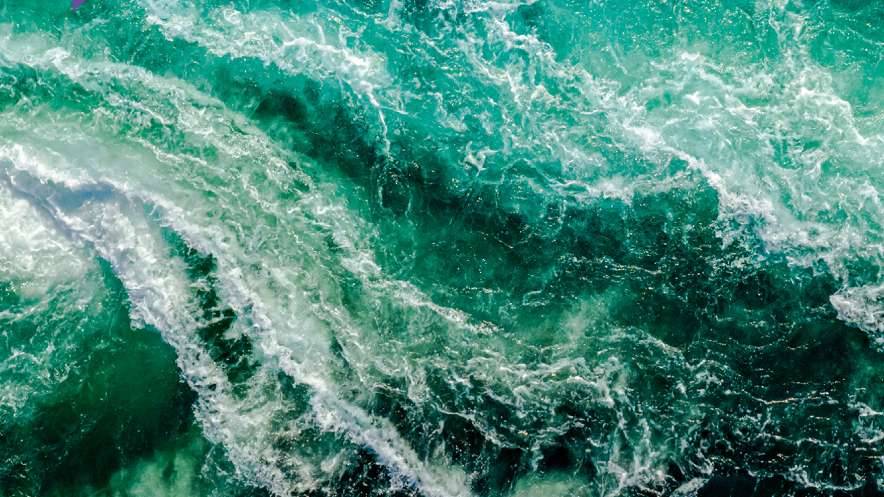
Tales of the Ocean Color
ARTICLES | Sep 29, 2022
Writer: Nuttawut Kulkaew
Editor: Wittaya Wonglor
Changes in sea color show oxygen levels shrinking to a quarter of their level 50 years ago, possibly related to climate issues, according to a 2018 report.
We see the sea as blue because seawater absorbs long-wavelength light such as red and orange, reflecting only the short-frequency spectrum. Only blue and green enter the human eye. But the sea can look darker depending on its depth. The deeper it is, the less light will be reflected into our eyes. The sea can also be green, red, cobalt, or brown. The change in color can be caused by plankton photosynthesis. Acidity can turn seawater green. Imbalance in biomass causes red algae to overgrow. Some particles change water color. An imbalance of minerals can cause the sea to turn yellow or brownish. Observing sea color is one way to monitor changes in marine ecosystems.
Satellite remote sensing technology lets oceanographers track changes and forecast local marine environments to understand environmental trends. NASA's Plankton, Aerosol, Cloud, ocean Ecosystem (PACE) mission, scheduled to launch satellites in 2023, will have a radiometer to scan the spectrum beyond the human eye and 2 optical gyroscopes: the UMBC Hyper-Angular Rainbow Polarimeter (HARP2) and the SRON Spectro-Polarimeter for Planetary EXploration one (SPEXone).
Implications for the future:
- Geospatial high tech will become even more developed. The digital twin concept at the macro level is not just about information in the virtual world. It also includes climate data to detect signs of change in terrestrial and marine ecosystems.
- Access to real-time and predictable environmental change data will help us understand ecosystem transformation cycles and plan for natural disasters.
References:
- Efficient multi-angle polarimetric inversion of aerosols and ocean color powered by a deep neural network forward model https://amt.copernicus.org/articles/14/4083/2021/#abstract
- Why Is the Ocean Different Colors in Different Places? https://science.howstuffworks.com/environmental/earth/oceanography/why-is-ocean-different-colors-different-places.htm
- Revisiting the Ocean Color Algorithms for Particulate Organic Carbon and Chlorophyll-a Concentrations in the Ross Sea https://doi.org/10.1029/2021JC017749
Want to know more about us? CLICK https://www.facebook.com/FutureTalesLABbyMQDC or follow https://www.blockdit.com/futuretaleslab











